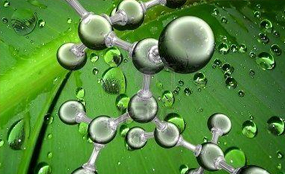
It has been demonstrated that the biological systems can transform inorganic metal ions into metal nanoparticles. The reductive capacities of the proteins and metabolites present in these organisms are used for the transformation. Plants extracts are used for the reduction of the metallic complexes to produce different size range of nanoparticles. For example, many studies were done on the production of Ag (silver) nanoparticles from a number of different plant leaf extracts. The extracts were obtained from Pine, Ginkgo, Magnolia and Persimmon plants. The Magnolia leaf broth was found to be the best Ag+ reducer as it took only 11 minutes to reduce 90% of the Ag+ present in the sample [1].
Another studies used bacteria for the preparation of metallic nanoparticles such as, gold cupper and palladium. Bacteria are abundant in the environment and have the ability to adapt extreme conditions. They are fast growing, inexpensive to cultivate and easy to manipulate. These properties make them very suitable for metallic nanoparticles preparation. Moreover, the ability to manipulate the temperature and pH of the bacterial medium gives the advantage to make nanoparticles with different sizes and shapes. This is very important advantage because nanoparticle’s properties depend on their sizes and shapes. Monitoring such properties is significant for different applications such as optics, catalysts or anti-microbial.
References:
[1] N. Pantidos, “Biological Synthesis of Metallic Nanoparticles by Bacteria, Fungi and Plants,” Journal of Nanomedicine & Nanotechnology, vol. 05, no. 05, 2014.
Posted by Mohammed ZABARA on January 23, 2017https://nanografi.com/blog/green-approach-for-metallic-nanoparticles-preparation/
Comments
Post a Comment